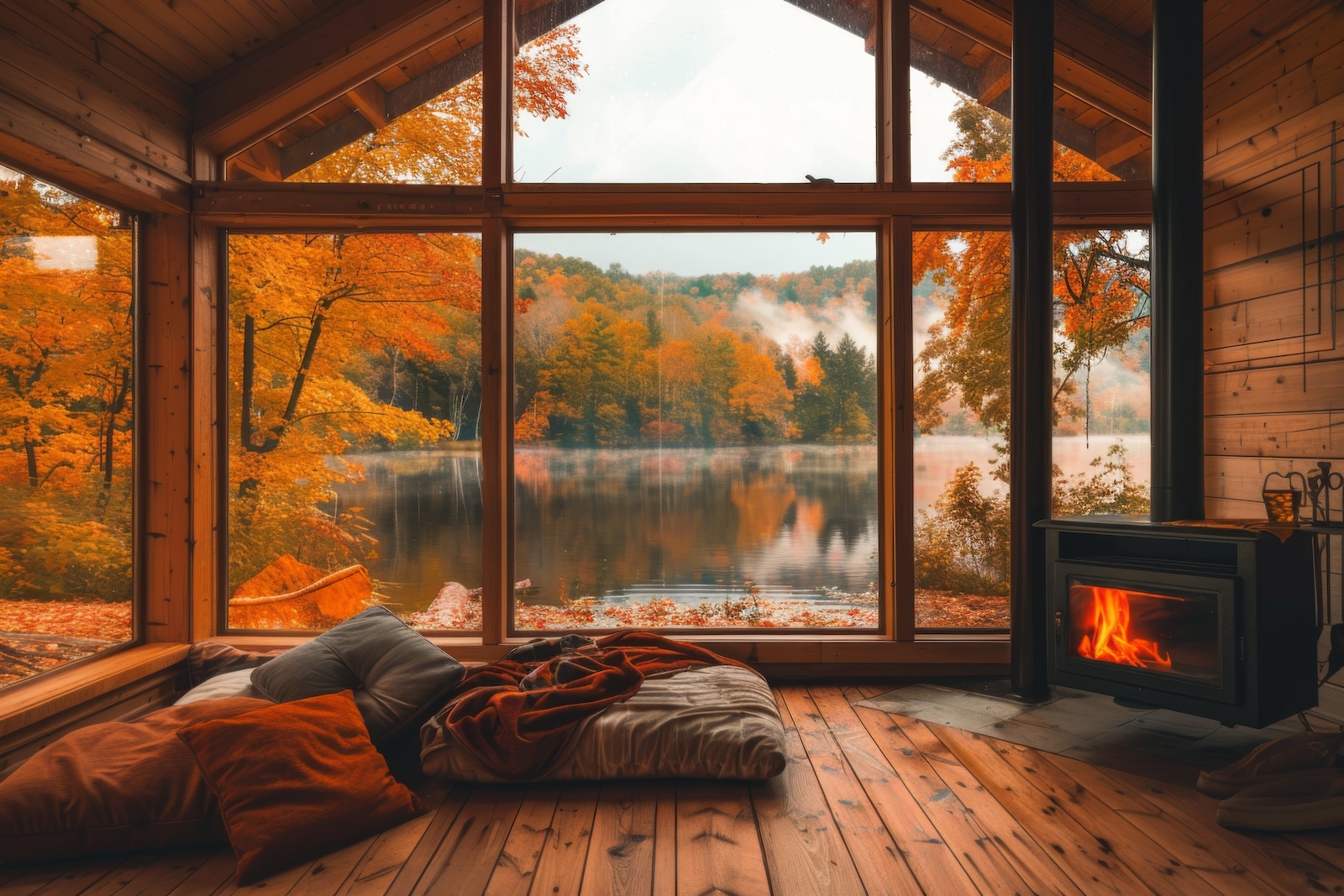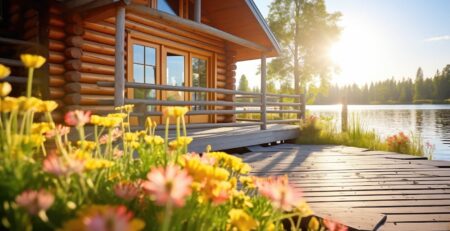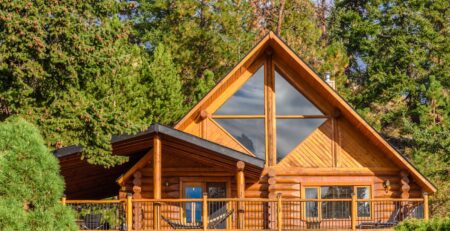How Warm Is a Log Home?
Log homes, known for their rustic charm and natural beauty, have been a popular housing choice for centuries. However, a common question that arises for potential log home buyers is, “How warm is a log home?” The answer involves understanding the unique thermal properties of log structures, how they retain heat, and the factors that influence their warmth. Here, we will explore these aspects in detail, providing insights into how log homes maintain a comfortable indoor environment even in colder climates.
Thermal Mass of Logs
One of the key reasons log homes are warm is due to the thermal mass of the logs themselves. Thermal mass refers to the ability of a material to absorb, store, and slowly release heat. Logs, being dense and massive, have excellent thermal mass properties. This means that log walls can absorb heat during the day from sunlight and other sources, storing it within the wood. As the temperature drops at night, this stored heat is gradually released into the interior, helping to maintain a consistent and comfortable indoor temperature.
The thermal mass of logs acts as a natural insulator, reducing the need for artificial heating and cooling systems. This ability to balance temperature fluctuations not only makes log homes energy-efficient but also enhances their coziness and warmth.
Insulation and R-Value
While logs have natural insulating properties, it’s essential to understand the concept of R-value, which measures a material’s resistance to heat flow. The higher the R-value, the better the insulation. Logs do not have as high an R-value as some modern insulation materials like fiberglass or foam, but they compensate for this with their thermal mass and ability to seal well against the weather.
Proper construction techniques are crucial to maximizing the insulation capabilities of a log home. Ensuring that the logs are tightly fitted and using high-quality sealants and chinking can prevent drafts and air leaks, the main causes of heat loss in any home. Sashco, for example, offers advanced sealants that maintain flexibility and adhesion, which are vital for keeping a log home airtight and warm.
Energy Efficiency
Log homes are often praised for their energy efficiency. The combination of thermal mass and natural insulation reduces the reliance on external heating systems. In many cases, a well-designed log home can maintain comfortable temperatures with minimal heating, even in colder climates.
Additionally, log homes can be designed to take advantage of passive solar heating. By strategically placing windows and other openings, homeowners can maximize sunlight during the day, further enhancing the home’s warmth and reducing energy consumption.
Factors Affecting Warmth
Several factors can influence how warm a log home is, including:
- Log Species and Thickness: Different wood species have varying insulating properties. Denser woods like cedar and pine are commonly used in log homes due to their excellent thermal performance. Thicker logs also provide better insulation and thermal mass, contributing to a warmer home.
- Climate and Location: The climate where a log home is located plays a significant role in its warmth. Homes in colder regions need to be constructed with careful attention to insulation and sealing to prevent heat loss.
- Construction Quality: The quality of construction is crucial in determining how well a log home retains heat. Properly fitted logs, effective sealing, and high-quality windows and doors are essential to ensure minimal heat loss.
- Orientation and Design: The orientation and design of a log home can impact its warmth. South-facing homes with large windows can capture more sunlight, providing natural heat during the winter months.
- Heating Systems: While log homes are naturally warm, supplemental heating systems may be necessary in extremely cold climates. Radiant floor heating, wood stoves, and energy-efficient fireplaces are popular choices for log homes, offering additional warmth and comfort.
Maintaining Warmth in a Log Home
To maintain warmth in a log home, regular maintenance is essential. This includes inspecting and resealing the logs as needed to prevent air leaks and drafts. Additionally, checking windows and doors for proper insulation and addressing any gaps or cracks can help improve energy efficiency.
Investing in high-quality stains and sealants designed for log homes can also enhance the warmth of a log home by providing better protection against the elements. Summit Paint and Stain offers a range of products that help maintain the integrity and performance of log structures.
Comparing Log Homes to Traditional Homes
Compared to traditional homes, log homes offer several advantages in terms of warmth and energy efficiency. The thermal mass of logs provides a natural advantage over conventional framing, which typically relies on added insulation materials to achieve similar thermal performance.
While traditional homes may have higher R-values in their walls, log homes benefit from their ability to regulate temperature more naturally. This can lead to lower energy costs and a more comfortable living environment, especially in regions with significant temperature fluctuations.
Embrace the Warmth of Log Home Living
Log homes are renowned for their warmth, thanks to the unique thermal properties of logs and the natural insulation they provide. With proper construction, maintenance, and design considerations, log homes can offer a cozy and energy-efficient living environment, even in colder climates.
For those considering a log home, it’s important to work with experienced builders and suppliers who understand the nuances of log construction. With the right approach, living in a log home can be a delightful experience, combining rustic charm with modern comfort.
Ensure your log home remains warm and inviting by using premium products from Summit Paint and Stain. We offer a wide range of stains, sealants, and maintenance supplies specifically designed for log homes, helping you protect and enhance your investment. Visit our online shop or contact us for expert advice on maintaining the warmth and beauty of your log home.



